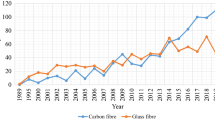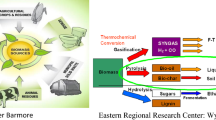Abstract
Four types of pellets and three agro-fuels were chemically characterised and burned in a pellet stove. To assess the influence of the material composing the firebox and the combustion efficiency of distinct biomass heating devices in the composition of the bottom ashes, three of the pellets were also burned in a conventional woodstove and in a fireplace. Ashes were analysed for their C, H and N contents by an elemental analyser, whilst major and trace elements were quantified by inductively coupled plasma atomic-emission spectrometry and inductively coupled plasma mass spectrometry, respectively. The mineralogy of ashes was determined by X-ray powder diffraction. The European standard test was applied to samples to determine the leaching potential of major, minor and trace elements. The contents of major and trace elements in the different types of biomass presented enormous variations, which are reflected in dissimilar mineralogical and chemical compositions of the respective ashes. The leachable potential of several elements of environmental concern present in oxy-anionic form at the alkaline pH of biomass ashes were generally high in all samples. Concentrations of some elements in the leachates were in the range of values with classification of “hazardous materials” by the European legislation in what respects the acceptance of these wastes at landfills. Pellets made up of wood wastes and containing preservatives (chromated copper arsenate and ammoniacal copper arsenate) are of concern. Due to lower combustion efficiencies, the leachable potential for most of the trace elements in ashes from the woodstove, and especially from the fireplace, was lower than that of the pellet stove.



Similar content being viewed by others
References
AEBIOM (2016). Statistical Report 2016. Key findings. European Biomass Association. Brussels. http://www.aebiom.org/statistical-report-2016/
Balasoiu CF, Zagury GJ, Deschenes L (2001) Partitioning and speciation of chromium, copper, and arsenic in CCA-contaminated soils: influence of soil composition. Sci Total Environ 280:239–255. https://doi.org/10.1016/S0048-9697(01)00833-6
Cruz NC, Rodrigues SM, Carvalho L, Duarte AC, Pereira E, Römkens PFAM, Tarelho LAC (2017) Ashes from fluidized bed combustion of residual forest biomass: recycling to soil as a viable management option. Environ Sci Pollut Res 24:14770–14781. https://doi.org/10.1007/s11356-017-9013-6
Font O, Córdoba P, Querol X, Coca P, Garcia-Peña F (2011) Co-gasification of biomass: effect on the fate of trace elements. 4th World of Coal Ash Conference (WOCA), 10–12 May, Denver, Colorado, USA. Paper 082. http://www.flyash.info/2011/082-Font-2011.pdf
Haynes WM (2015) Handbook of chemistry and physics, 95th Edition. CRC Press, Taylor and Francis Group, Boca Raton, FL
Hingston A, Collins CD, Murphy RJ, Lester JN (2001) Leaching of chromated copper arsenate wood preservatives: a review. Environ Pollut 111:53–66. https://doi.org/10.1016/S0269-7491(00)00030-0
James AK, Thring RW, Helle S, Ghuman HS (2012) Ash management review - applications of biomass bottom ash. Energies 5:3856–3873. https://doi.org/10.3390/en5103856
Kajda-Szczeńniak M (2014) Characteristics of ashes from fireplace. Arch Waste Manag Environ Protect 16:73–78
Kalembkiewicz J, Galas D, Sitarz-Palczak E (2018) The physicochemical properties and composition of biomass ash and evaluating directions of its applications. Pol J Environ Stud 27:2593–2603. https://doi.org/10.15244/pjoes/80870
Lanzerstorfer C (2015) Chemical composition and physical properties of filter fly ashes from eight grate-fired biomass combustion plants. J Environ Sci 30:191–197. https://doi.org/10.1016/j.jes.2014.08.021
Lundholm K, Boström D, Nordin A, Shchukarev A (2007) Fate of Cu, Cr, and As during combustion impregnated wood with and without peat additive. Environ Sci Technol 41:6534–6540. https://doi.org/10.1021/es0630689
Lundholm K, Rogers JM, Haynes BS, Boström D, Nordin A (2008) Fate of Cu, Cr and As during the combustion stages of burning CCA-treated wood fuel particles. Energy Fuel 22:1589–1597. https://doi.org/10.1021/ef700621y
Mahlaba JS, Kearsley EP, Kruger RA (2011) Physical, chemical and mineralogical characterisation of hydraulically disposed fine coal ash from SASOL Synfuels. Fuel 90:2491–2500. https://doi.org/10.1016/j.fuel.2011.03.022
Nico P, Ruby M, Lowney Y, Holm S (2006) Chemical speciation and bioaccessibility of arsenic and chromium in chromated copper arsenate-treated wood and soils. Environ Sci Technol 40:402–408. https://doi.org/10.1021/es050950q
Okmanis M, Lazdiņa D, Lazdiņš A (2015) The composition and use value of tree biomass ash. Rural Sust Res 34(329):32–37. https://doi.org/10.1515/plua-2015-0011
Pohlandt-Schwandt K, Salthammer T, Marutzky R (2002) Reduction of soluble chromate in wood ash by formaldehyde. Biomass Bioenergy 22:139–143. https://doi.org/10.1016/S0961-9534(01)00053-8
Querol X, Fernandez-Turiel JL, Lopez-Soler A (1995) Trace elements in coal and their behaviour during combustion in a large power station. Fuel 74:331–343. https://doi.org/10.1016/0016-2361(95)93464-O
Ribeiro J, Tarelho L, Gomes AP (2018) Incorporation of biomass fly ash and biological sludge in the soil: effects along the soil profile and in the leachate water. J Soils Sediments 18:2023–2031. https://doi.org/10.1007/s11368-018-1949-8
Romero E, Quirantes M, Nogales R (2017) Characterization of biomass ashes produced at different temperatures from olive-oil-industry and greenhouse vegetable wastes. Fuel 208:1–9. https://doi.org/10.1016/j.fuel.2017.06.133
Song J, Townsend J, Solo-Gabriele H, Yong-Chul J (2006) Hexavalent chromium reduction in soils contaminated with chromated copper arsenate preservative. Soil Sediment Contam 15:387–399. https://doi.org/10.1080/15320380600751751
Száková J, Ochecová P, Hanzlíček T, Perná I, Tlustoš P (2013) Variability of total and mobile element contents in ash derived from biomass combustion. Chem Pap 67: 1376-1385. https://doi.org/10.2478/s11696-013-0399-4
Umamaheswaran K, Batra VS (2008) Physico-chemical characterisation of Indian biomass ashes. Fuel 87:628–638. https://doi.org/10.1016/j.fuel.2007.05.045
Vassilev SV, Baxter D, Anderson LK, Vassileva CG (2010) An overview of composition of biomass. Fuel 89:913–933. https://doi.org/10.1016/j.fuel.2009.10.022
Vassilev SV, Baxter D, Andersen LK, Vassileva CG (2013) An overview of the composition and application of biomass ash. Part 1. Phase–mineral and chemical composition and classification. Fuel 105:40–76. https://doi.org/10.1016/j.fuel.2012.09.041
Vassilev SV, Vassileva CG, Baxter D (2014) Trace element concentrations and associations in some biomass ashes. Fuel 129:292–231. https://doi.org/10.1016/j.fuel.2014.04.001
Vicente ED, Duarte MA, Tarelho LAC, Nunes TF, Amato F, Querol X, Colombi C, Gianelle V, Alves CA (2015) Particulate and gaseous emissions from the combustion of different biofuels in a pellet stove. Atmos Environ 120:15–27. https://doi.org/10.1016/j.atmosenv.2015.08.067
Wang D, Sweigard RJ (2007) Characterisation of fly ash and bottom ash from a coal-fired power plant. Int J Min Reclam Environ 181(186):181–186. https://doi.org/10.1080/09208119608964828
Wang G, Shen L, Sheng C (2012) Characterization of biomass ashes from power plants firing agricultural residues. Energy Fuel 26:102–111. https://doi.org/10.1021/ef201134m
Zając G, Szyszlak-Bargłowicz J, Gołębiowski W, Szczepanik M (2018) Chemical characteristics of biomass ashes. Energies 11:2885. https://doi.org/10.3390/en11112885
Funding
This study was funded by the European Commission through the project “AIRUSE - Testing and Development of Air Quality Mitigation Measures in Southern Europe” (LIFE11 ENV/ES/000584). Estela Vicente received a fellowship (SFRH/BD/117993/2016) from the Portuguese Foundation for Science and Technology (FCT). This study was also financially supported by CESAM (UID/AMB/50017 - POCI-01-0145-FEDER-007638), FCT/MEC through national funds, FEDER, within the PT2020 Partnership Agreement and Compete 2020. The Generalitat de Catalunya (AGAUR 2017 SGR41) also supported this study.
Author information
Authors and Affiliations
Corresponding author
Additional information
Responsible editor: Constantini Samara
Publisher’s note
Springer Nature remains neutral with regard to jurisdictional claims in published maps and institutional affiliations.
Electronic supplementary material
ESM 1
(DOCX 31 kb)
Rights and permissions
About this article
Cite this article
Alves, C.A., Font, O., Moreno, N. et al. Mineralogical, chemical and leaching characteristics of ashes from residential biomass combustion. Environ Sci Pollut Res 26, 22688–22703 (2019). https://doi.org/10.1007/s11356-019-05231-w
Received:
Revised:
Accepted:
Published:
Issue Date:
DOI: https://doi.org/10.1007/s11356-019-05231-w




